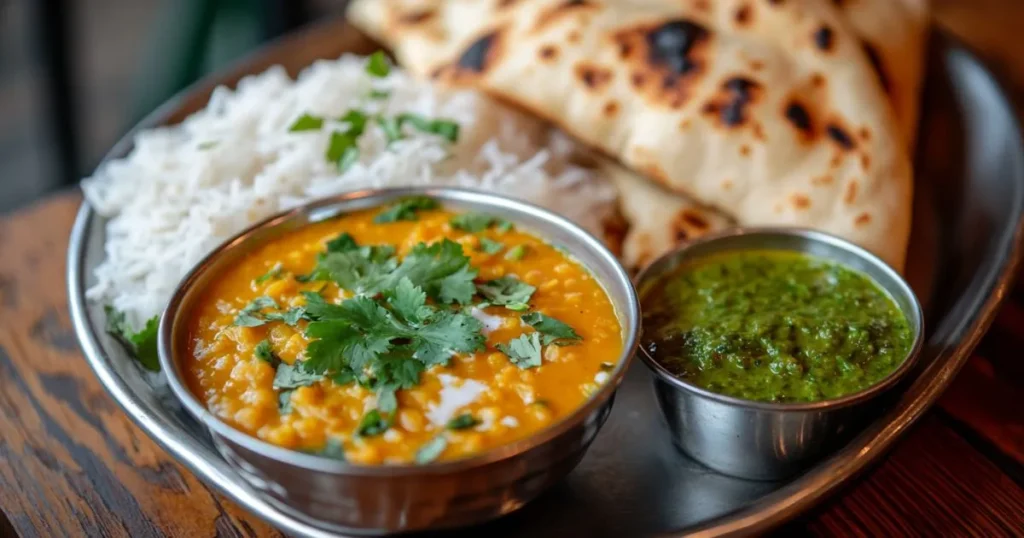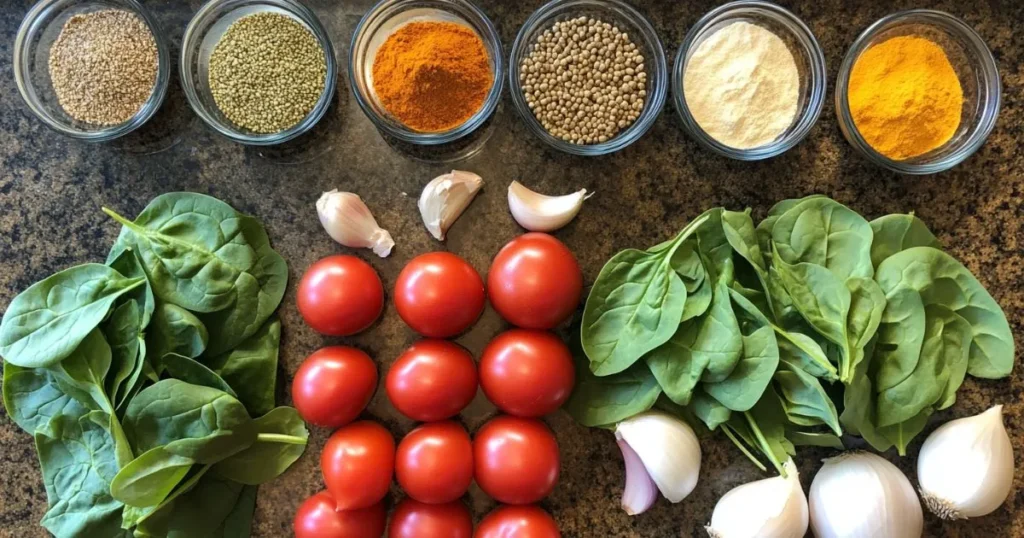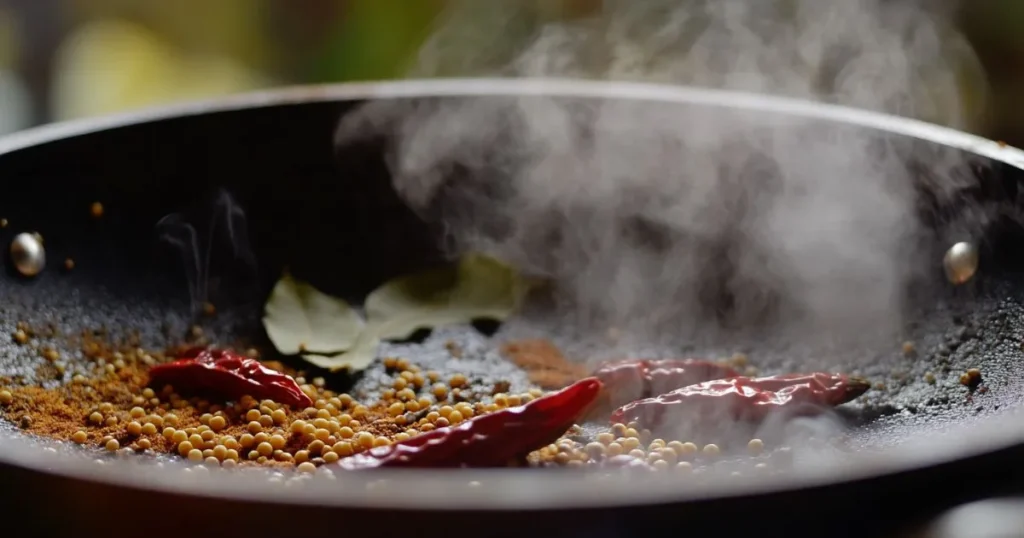Why Choose Indian Vegetarian Dinner?
Indian vegetarian dinners are a delightful combination of rich flavors, diverse textures, and wholesome ingredients. If you’re wondering, What Should I Eat for Dinner, Veg Indian, the answer lies in the plethora of choices available. From creamy curries to spiced lentils and freshly baked bread, every dish brings a unique blend of tradition and taste.
Not only are Indian veg meals packed with nutrients, but they also cater to various dietary preferences, including vegan and gluten-free options. Moreover, they are a testament to the country’s rich culinary heritage, showcasing how plant-based eating can be both flavorful and fulfilling. Whether you’re cooking for yourself or your family, an Indian vegetarian dinner guarantees satisfaction.
Table of Contents
A Versatile Approach to Dinner Planning
One of the best things about Indian vegetarian meals is their versatility. They allow you to mix and match ingredients based on what you have at home. When you ask yourself, What Should I Eat for Dinner, Veg Indian, you’re not limited to one set menu. You can whip up a comforting dal with rice, pair a tangy curry with naan, or even enjoy a simple vegetable stir-fry with Indian spices.
This flexibility is perfect for busy weeknights or when you want to try something new without spending hours in the kitchen. Indian cooking also offers easy swaps to accommodate personal tastes or restrictions, making it a go-to option for anyone seeking variety in their dinner routine.
Key Benefits of Indian Veg Meals
Choosing Indian vegetarian dishes for dinner is not just about taste; it’s also about health and sustainability. These meals often feature lentils, beans, fresh vegetables, and whole grains, which are excellent sources of protein, fiber, and essential nutrients. If you’re thinking, What Should I Eat for Dinner, Veg Indian, remember that these dishes can boost your energy levels while promoting digestion and overall well-being.
Indian veg meals are also sustainable, as they emphasize locally sourced, seasonal produce. Cooking such meals aligns with a mindful lifestyle, ensuring both your body and the environment benefit from your choices. With endless combinations of spices and ingredients, Indian veg dinners keep your taste buds excited and your health on track.

Recipe History
The Cultural Significance of Indian Veg Dinners
Indian vegetarian dinners hold a deep cultural significance, reflecting centuries of tradition and spiritual practices. For many, the question What Should I Eat for Dinner, Veg Indian is answered by the abundance of dishes rooted in ancient rituals and philosophies. Vegetarianism is closely linked to religions like Hinduism, Jainism, and Buddhism, which emphasize non-violence and mindful eating.
Meals often symbolize more than sustenance—they represent hospitality and connection. From humble dal and rice served in village homes to elaborate feasts for festivals, Indian vegetarian food reflects the nation’s ethos of sharing and gratitude. These dishes have been lovingly passed down through generations, preserving the values and flavors of Indian culture.
Traditional vs. Modern Indian Vegetarian Recipes
The evolution of Indian vegetarian dinners showcases a fascinating blend of traditional methods and modern twists. Traditionally, dishes like khichdi, sabzi, and roti were prepared with simple, farm-fresh ingredients. These meals were balanced and hearty, answering the timeless question, What Should I Eat for Dinner, Veg Indian with wholesome simplicity.
In recent years, however, Indian veg recipes have adapted to fit contemporary lifestyles. Innovations like one-pot meals, air-fried snacks, and fusion dishes have made it easier to enjoy Indian flavors without compromising convenience. While traditional recipes remain a treasure, modern techniques offer creative ways to enjoy these time-honored dishes.
How Regional Diversity Shapes Indian Vegetarian Cuisine
India’s diverse geography and culture have given rise to a vast array of vegetarian dishes, each with its unique flavors and cooking styles. When you think of What Should I Eat for Dinner, Veg Indian, you’re essentially choosing from hundreds of regional cuisines. Northern India offers creamy curries like paneer butter masala, while the South boasts tangy tamarind-based dishes such as sambar.
The West specializes in snacks and dishes made with chickpea flour, like dhokla, while the East is known for its mustard-flavored delicacies like shorshe bhindi. Each region’s ingredients, spices, and techniques contribute to the diversity of Indian vegetarian cuisine, ensuring there’s always something exciting to try.
Ingredients and Preparation
Must-Have Ingredients for Indian Veg Dinners
When deciding What Should I Eat for Dinner, Veg Indian, having the right ingredients is key. Staples like lentils (dal), rice, and wheat flour (atta) form the foundation of most meals. Spices such as cumin, coriander, turmeric, and garam masala are essential for creating that signature Indian flavor.
Vegetables like potatoes, tomatoes, spinach, and eggplants are commonly used, while paneer (Indian cottage cheese) and yogurt add richness. Don’t forget fresh herbs like cilantro and curry leaves to finish your dishes. With these ingredients, you can whip up a variety of Indian vegetarian meals that are both nourishing and delicious.

Popular Indian Vegetarian Dinner Recipes
If you’re wondering, What Should I Eat for Dinner, Veg Indian, here are some popular options to try:
- Dal Tadka: Lentils tempered with spices for a comforting, protein-packed meal.
- Paneer Butter Masala: Soft paneer cubes in a creamy tomato-based gravy.
- Vegetable Biryani: A fragrant rice dish cooked with mixed vegetables and spices.
- Baingan Bharta: Smoky roasted eggplant mashed and cooked with onions and tomatoes.
These recipes are loved for their simplicity and flavor, making them perfect for weeknight dinners or special occasions.
Simple Steps to Make a Balanced Indian Veg Meal
Crafting a balanced Indian vegetarian dinner doesn’t have to be overwhelming. If you’re asking What Should I Eat for Dinner, Veg Indian, follow these steps:
- Choose a Protein Base: Lentils, chickpeas, or paneer provide essential protein.
- Add a Carb Component: Pair your dish with rice, roti, or paratha.
- Include Vegetables: Use seasonal produce for freshness and variety.
- Use Spices Strategically: A mix of spices can elevate even the simplest ingredients.
This approach ensures you get a wholesome, flavorful meal every time.
Essential Tools for Indian Cooking
To answer What Should I Eat for Dinner, Veg Indian effectively, having the right kitchen tools makes all the difference. Key tools include:
- Tava: A flat griddle for making roti or paratha.
- Pressure Cooker: Essential for cooking lentils and rice quickly.
- Spice Grinder: To create fresh spice blends.
- Kadhai: A deep frying pan used for sautéing and frying.
These tools streamline the cooking process, making it easier to prepare Indian vegetarian meals, whether you’re a beginner or a seasoned cook.
Serving Suggestions
Tips for Serving Indian Veg Dinners Perfectly
Serving Indian vegetarian dinners is all about creating an inviting experience. When asking yourself, What Should I Eat for Dinner, Veg Indian, presentation plays an important role in elevating the meal. Use traditional serving bowls like copper or stainless steel for an authentic touch.
Serve dishes like dal or curry in small bowls with freshly chopped herbs or a drizzle of cream for garnish. Accompany them with roti or rice served on a large platter. Add pickles, papad (crispy lentil wafers), and chutneys to complete the meal. The combination of flavors and textures creates a satisfying and memorable dining experience.
Pairing Indian Breads with Veg Curries
If you’re wondering, What Should I Eat for Dinner, Veg Indian, pairing the right bread with your curry can make all the difference. For creamy curries like paneer butter masala, soft naan or paratha works beautifully. Roti or chapati complements lighter dishes like aloo gobi or dal fry.
If you’re serving something dry like a vegetable stir-fry, stuffed parathas can add richness to the meal. Experimenting with different breads allows you to enjoy various textures while keeping the meal exciting and fulfilling.
Side Dishes to Enhance Indian Veg Dinners
Indian veg dinners are often accompanied by flavorful side dishes that add depth to the meal. When deciding What Should I Eat for Dinner, Veg Indian, consider adding:
- Raita: A cooling yogurt dish mixed with cucumber, mint, or boondi.
- Pickles: Tangy and spicy condiments that elevate the main course.
- Salads: Fresh, crunchy options like kachumber (onion, cucumber, and tomato salad).
- Chutneys: Sweet tamarind or spicy mint chutney for added flavor.
These sides not only complement the main dishes but also provide a balance of tastes and textures.
Presenting Your Indian Vegetarian Meal
Presentation can transform a simple meal into a feast. To make your meal visually appealing when deciding What Should I Eat for Dinner, Veg Indian, use colorful garnishes like fresh cilantro, pomegranate seeds, or toasted nuts.
Arrange dishes on a large tray or thali, grouping items like curry, rice, bread, and sides in separate compartments. If serving guests, consider labeling the dishes or providing a brief description to enhance their experience. A well-presented Indian vegetarian meal not only satisfies hunger but also engages the senses.
Cooking Techniques
Techniques for Perfect Indian Curries
When preparing Indian vegetarian meals, mastering curry-making techniques is essential. If you’re pondering, What Should I Eat for Dinner, Veg Indian, the richness and depth of a curry can define your meal. Start by sautéing onions, ginger, and garlic until golden brown, which forms the flavor base.
Add spices like turmeric, cumin, and coriander early in the process to release their aromas. Cooking the tomatoes until the oil separates is a key step to achieving the desired consistency. Whether it’s a creamy paneer curry or a tangy vegetable curry, this technique ensures a robust and flavorful dish every time.

The Art of Tempering Spices
Tempering, or “tadka,” is a cornerstone of Indian cooking that elevates the flavor of vegetarian dishes. If you’re exploring What Should I Eat for Dinner, Veg Indian, understanding tadka is crucial. This technique involves heating oil or ghee and adding whole spices like mustard seeds, cumin, or dried chilies.
The spices sizzle and release their flavors, which are then poured over dal, curries, or rice dishes. This simple step can transform even the most basic meal into something extraordinary, adding layers of aroma and taste.
Efficient Meal Prep for Indian Vegetarian Dinners
When deciding What Should I Eat for Dinner, Veg Indian, having a meal prep routine can save time and effort. Start by chopping vegetables in advance and storing them in airtight containers. Prepare spice blends, like garam masala or sambar powder, in bulk for convenience.
Cook staples like rice or lentils in a pressure cooker or instant pot to save time. You can also freeze cooked curry bases to use later, reducing prep time without compromising flavor. These small steps make Indian vegetarian cooking efficient and stress-free.
Time-Saving Hacks for Indian Veg Cooking
Cooking Indian vegetarian dinners doesn’t have to be time-consuming. If you’re short on time and wondering, What Should I Eat for Dinner, Veg Indian, consider these hacks:
- Use Pre-Cut Vegetables: Many stores offer fresh or frozen pre-cut vegetables.
- Opt for Canned Ingredients: Items like canned tomatoes or chickpeas can speed up cooking.
- Invest in Multi-Use Tools: A food processor can make chopping, grinding, or blending effortless.
- Cook in Batches: Prepare multiple servings and store portions for the week.
With these tips, you can enjoy flavorful Indian vegetarian meals even on the busiest days.
FAQ
What are some quick Indian vegetarian dinner ideas?
If you’re short on time and wondering, What Should I Eat for Dinner, Veg Indian, there are plenty of quick and easy options. You can make a comforting vegetable pulao by stir-frying rice with mixed vegetables and spices. Another simple choice is masoor dal paired with steamed rice or chapati.
For something lighter, try aloo paratha (stuffed potato flatbread) served with yogurt and pickles. These dishes require minimal preparation and can be ready in under 30 minutes, making them perfect for busy evenings.
Can I make Indian veg dinners in under 30 minutes?
Yes! Preparing Indian veg dinners in under 30 minutes is completely possible, even for beginners. When you ask, What Should I Eat for Dinner, Veg Indian, think of simple recipes like paneer bhurji (scrambled paneer with spices) or tadka dal. Pair them with quick-cooking rice or store-bought naan for a complete meal.
Using time-saving tools like a pressure cooker or instant pot can also speed up cooking. Ready-to-use ingredients like pre-chopped veggies or canned lentils can further cut down on prep time without sacrificing flavor.
What are the best Indian dishes for a healthy dinner?
If you’re looking for nutritious options, Indian cuisine has plenty to offer. Wondering, What Should I Eat for Dinner, Veg Indian that’s healthy? Consider dishes like moong dal khichdi, a one-pot meal made with lentils and rice, or palak paneer, a spinach and paneer curry rich in iron and protein.
Other healthy options include vegetable stir-fries with minimal oil and sambar, a South Indian lentil soup loaded with vegetables. These meals are low in fat, high in nutrients, and perfect for a guilt-free dinner.
How do I balance spices in Indian vegetarian meals?
Balancing spices is key to creating flavorful Indian vegetarian meals. If you’re wondering, What Should I Eat for Dinner, Veg Indian, and want the spices just right, start with a small amount and adjust gradually. Use a combination of ground spices for depth and whole spices for aroma.
To balance heat, add a dollop of yogurt, cream, or coconut milk. A squeeze of lemon or a pinch of sugar can help harmonize bold flavors. Practice and tasting throughout the cooking process will help you achieve the perfect balance every time.
Conclusion
Recap: Why Indian Vegetarian Dinners Are the Best Choice
When you’re asking yourself, What Should I Eat for Dinner, Veg Indian, the answer lies in the perfect blend of nutrition, flavor, and cultural richness that these meals offer. Indian vegetarian dinners are versatile, accommodating a variety of tastes and dietary preferences. They bring together fresh ingredients, aromatic spices, and time-tested cooking techniques to create a satisfying dining experience.
Whether you’re in the mood for a creamy curry, a hearty lentil soup, or a fragrant rice dish, Indian veg meals are a wholesome choice. They nourish the body, delight the palate, and showcase the beauty of plant-based eating. For more delicious inspiration, explore our collection of quick dinner recipes – Indian vegetarian style.
How to Get Started with Indian Veg Cooking
Getting started with Indian vegetarian cooking is easier than you might think. If you’re wondering, What Should I Eat for Dinner, Veg Indian, begin with simple recipes like dal tadka or aloo sabzi. Stock your pantry with essential spices like turmeric, cumin, and garam masala, along with staples like rice, lentils, and whole wheat flour.
Practice basic techniques like tempering spices and sautéing onions to build your confidence. You can also check out our tips on what to eat at night in dinner – Indian food ideas to help you plan satisfying evening meals.
As you experiment, you’ll discover the endless possibilities of Indian vegetarian cuisine and develop your own favorite dishes. Not sure where to start tonight? Let our guide to what should I eat for dinner today as a vegetarian point you in the right direction.

